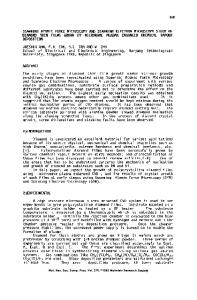Resolving the Nanostructure of Self Organized Thin Films using Corrected Scanning Transmission Electron Microscopy
- PDF / 1,256,154 Bytes
- 7 Pages / 612 x 792 pts (letter) Page_size
- 46 Downloads / 312 Views
Advances:
Email alerts: Click here Subscriptions: Click here Commercial reprints: Click here Terms of use : Click here
Resolving the Nanostructure of Self Organized Thin Films using Corrected Scanning Transmission Electron Microscopy. Robert D. Boyd, Viktor Elofsson and Kostas Sarakinos MRS Advances / FirstView Article / May 2016, pp 1 - 6 DOI: 10.1557/adv.2016.34, Published online: 19 January 2016
Link to this article: http://journals.cambridge.org/abstract_S2059852116000347 How to cite this article: Robert D. Boyd, Viktor Elofsson and Kostas Sarakinos Resolving the Nanostructure of Self Organized Thin Films using Corrected Scanning Transmission Electron Microscopy.. MRS Advances, Available on CJO 2016 doi:10.1557/adv.2016.34 Request Permissions : Click here
Downloaded from http://journals.cambridge.org/ADV, IP address: 141.211.4.224 on 20 May 2016
MRS Advances © 2016 Materials Research Society DOI: 10.1557/adv.2016.34
Resolving the Nanostructure of Self Organized Thin Films using Corrected Scanning Transmission Electron Microscopy. Robert D. Boyd1, Viktor Elofsson2 and Kostas Sarakinos2 1. Plasma and Coatings Physics Division, IFM-Material Physics, Linköping University, Linköping Sweden. 2. Nanoscale Engineering Division, IFM-Material Physics, Linköping University, Linköping Sweden. ABSTRACT Corrected scanning transmission electron microscopy (STEM) was used to characterise a novel thin film displaying a complex three dimensional nanostructure. The film was prepared by plasma deposition in such a way that it self-organises into layers of silver islands (each with typical dimensions of a few nanometres) within an aluminium nitride matrix. Successful application of STEM imaging and subsequent analysis was able to determine critical information about the material structure, namely island size, shape and crystalline orientation and the detection of island – matrix intermixing. Such information is essential in being able to predict the properties of this material and the approach adopted here is applicable to any similarly structured material. INTRODUCTION Nanostructured thin films have an important technological role which is expected to dramatically increase in both the short and long term. Novel films with advanced optical, magnetic and thermoelectrical properties that are directly related to the length scale of the films internal features (typically crystal grain size and/or compositional modulation) have been proposed. For example, electromagnetic radiation strongly interacts with material with features with dimensions are comparable to the wavelength; 100s nm in case of optical light[1] and a 0.1s nm for X-rays[2]. A good thermoelectric material will be a good electrical conductor and a poor thermal one, which can occur when the material features are in the range 1-2 nm[3]. The use of plasma deposition, far from equilibrium, has been proposed as a route to produce such materials. To harness their potential of these materials must be formulated and, as importantly, characterized. Without the latter the str
Data Loading...










